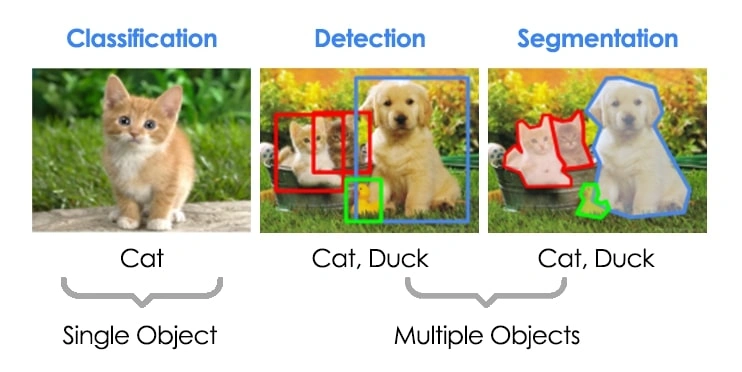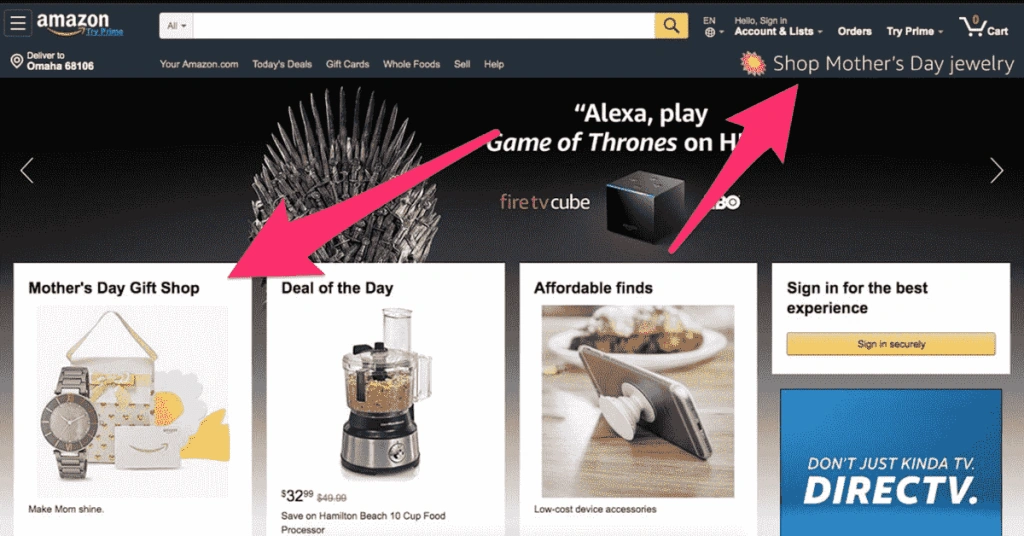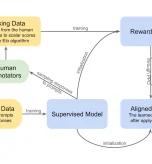eCommerce is one of the world’s largest industries, forecast to account for 22% of all global retail sales by the end of 2023.
The infrastructure required for smooth and efficient eCommerce has evolved to support this growth.
Online shops are now extremely intelligent, with recommendation systems, personalization, and marketing automation that targets customers at precisely the right time to drive sales.
Online shops are powered by AI and machine learning (ML), which provide businesses with advanced analytics into sales, customer behavior, and numerous other factors.
These strategies rely heavily on data, and data labeling is critical to their success.
This article explores data labeling for eCommerce.
What is Data Labeling?
Data labeling is the process of annotating data with specific labels or tags that categorize and classify the data.
For example, you might classify an image of a dress as a “dress” and also tag specific features within that image, like the color, sleeve length, hem, etc. Then, labeled data is ‘exposed’ to supervised machine learning models, which learn from the labels.

By learning from labeled data, ML models are able to generalize and infer features when exposed to new unseen data.
Labeled data trains supervised models, so they can replicate their training onto unlabeled data.
The process of data labeling is time-consuming and requires skilled professionals to label the data accurately.
Types of Data Labeling in eCommerce
Data labeling can take many forms, but some types are more prevalent in eCommerce than others. Some of the most common types of data labeling in eCommerce include:
- Image Labeling: This involves annotating product images with specific labels or tags to accurately categorize and classify the images.
- Text Labeling: This involves annotating product descriptions and specifications with specific labels or tags to accurately categorize and classify the text data.
- Sentiment Analysis: Involves labeling customer feedback, reviews, and social media posts with specific labels or tags to identify the sentiment underlying text data.
- Attribute Labeling: Entails labeling product attributes such as color, size, and material with specific labels or tags to accurately categorize and classify the data.
So, how does data labeling improve eCommerce?
Why is Data Labeling Important for eCommerce Businesses?
Data labeling is fundamental for supervised machine learning, so any ML model that utilizes supervised techniques for eCommerce purposes requires data labeling.
In eCommerce, supervised models are used for everything from building personalized shopping experiences to inventory management, visual searching, augmented reality (AR), or even virtual reality (VR) shopping.
Data labeling also supports numerous technologies and industries that support eCommerce, such as fraud detection and cybercrime, transport and logistics, and data analysis for financial and resource planning.
Here are 6 examples of data labeling for eCommerce:
1: Improves Product Recommendations
Product recommendation is key to modern eCommerce. By understanding what customers want, businesses can recommend the products they’re most likely to buy. These are called recommender systems.
Personalized recommendations increase the chances of customers making a purchase, increasing revenue.

To build product recommender systems, eCommerce businesses must label their products accurately with classes, features, prices and any other data that describes the product.
A well-labeled product catalog is fundamental to building recommender systems. Once products are comprehensively and accurately labeled with classes and other attributes, businesses can feed them into a recommender system that responds to user behavior. More on this below.
Recommender systems are used in many forms of eCommerce – some 80% of Netflix watch decisions are made directly through their recommendations, for example.
Netflix’s recommender system couldn’t possibly work without extremely accurate and comprehensive labeling of films, TV programs, etc, which is where data labeling comes into play.
2: Enhances Customer Experience
Data labeling helps businesses augment the customer experience through predictive analytics. Building a robustly categorized customer database is prerequisite for a wide range of analytics and modeling tasks.
Businesses can use data to build personalization systems to enhance customer experiences, which often involves ingesting and labeling data from purchases, CTAs, and other on-site or in-app behavior. This data is used to inspire better UI design and branding and craft personalized marketing.
Enhancing the customer experience drives sales and increases retention and brand loyalty.
3: Improves Search Results
Accurate data labeling enables eCommerce businesses to improve their product catalogs and search results.
By effectively labeling products, users will be able to find what they need with minimal effort. This can be done manually or using semi-supervised techniques.
Visual searches, like Google Lens, are now equipping customers with a means to take photos of items and search for matching products. They can even take photos of patterns, colors, or other features to find related products. This heavily relies on supervised computer vision, and by extension, data labeling.
4: Shop and Inventory Management
At the back-end, data labeling has a myriad of uses across inventory management, transport and logistics, procurement, etc.
There’s an ML model for practically every front-end and back-end eCommerce business problem, including monitoring stock and ordering precisely when required to meet demand, organizing products on the storefront for maximum impact, and adjusting product lines to adapt to demand.
5: Price Optimization
Data labeling enables eCommerce businesses to optimize their prices. ML models can optimize pricing to scale up or down depending on internal and external factors.
For example, prices may increase with seasonal demand for a product and decrease when stock reaches critically low levels, enabling faster restocking. Dynamic pricing increases revenue and profits.
6: Sentiment Analysis
NLP-driven sentiment analysis enables businesses to analyze reviews, ratings, and other relevant text data at scale. This involves sentiment analysis and named entity recognition (NER).
This is crucial for ‘social media listening,’ where businesses analyze relevant conversations on their brand or products (or a competitor’s brand or products) to garner intelligence and insights.
Businesses can also analyze reviews and respond when they detect specific tones.
Personalization for eCommerce
Personalization in eCommerce is the process of tailoring shopping experiences to specific customers.
For example, an outdoor enthusiast should be displayed vastly different items compared to a gaming enthusiast.
Personalization also involves the creation of marketing strategies that target individuals or groups of individuals directly. This process uses user data and predictive analytics to target promotions, discounts, etc, at the right time to maximize revenue.
Recommender systems have revolutionized eCommerce. Among the first of these models was Amazon’s recommender system, which is thought to account for some 35% of their retail revenue.
The year Amazon rolled their recommender system out, sales increased by some 29%. Recommender systems are now ubiquitous, and many of their workings and inner mechanics are supported by supervised machine learning and by extension, data labeling.
How Data Labeling Improves Product Recommendations
Data labeling is essential to personalized shopping, as well-labeled data is essential to building the various analytics pipelines required to make accurate recommendations.
Accurately labeled data helps businesses train machine learning algorithms to identify patterns and trends in customers’ buying behavior.
Businesses can then use this information to automate personalized product recommendations.
For instance, if a customer frequently buys skincare products with certain labels like “cruelty-free” or “sensitive skin,” the business can identify this trend and recommend more skincare products with these attributes in the future.

Crucially, recommender systems have gone beyond merely recommending products from the same category – e.g. “skincare”. They use more specific attributes such as “cruelty-free” to delve deeper into customer preferences.
Recommender Systems
Let’s dive deeper into recommender systems and how they relate to machine learning and data annotation.
The first step to building a recommender system is to build an effective product recommendation system for eCommerce.
Building a strong product database is fundamental, with tags covering everything from product categories to specific features. Businesses also need customer data to analyze how customers interact with products.
Collecting both demographic and behavioral data is crucial to building a comprehensive recommendation system. This relates to the field of segmentation analysis, which seeks to break down customers into smaller target markets based on shared characteristics.Segmentation analysis for building recommender systems
Behavioral data is either collected explicitly, through intentional or voluntary user actions such as leaving reviews, or implicitly, through search history, order history, clicks, dwell time, etc.
Types of Recommender Systems
There are several types of product recommendation systems based on different machine learning algorithms.
The main categories are:
- Content-based filtering
- Collaborative filtering
- Complementary filtering, and
- Hybrid recommendation systems.
Content-Based Filtering
CBF is a straightforward approach that tracks a user’s actions, and behavior, such as products bought, items clicked on, web pages viewed, and time spent browsing through various product categories.
Models use this information to create a customer profile compared to the product catalog to make recommendations.
Collaborative Filtering
CF methods involve collecting and analyzing user information and preferences and predicting what each user will like based on their shared characteristics with other users.
The CF filtering algorithm will determine when users have similar tastes and recommend one person’s preferences to another. Machine learning modes used here include k-nearest neighbors and latent factor analysis (LFM).
Complementary Filtering
Complementary filtering models learn the probability of a customer buying multiple products together or buying a product that complements another.
For example, when a user buys a laptop from an e-commerce store, the model will determine that they’re unlikely to buy another laptop on their next visit. As such, the algorithms recommend products that are complementary to other products. The Naïve Bayes algorithm is common here.
Hybrid
Hybrid recommendation systems combine some or all of the above methods. They use real-time data to enrich insights and tune recommender models for individual customers rather than broad-based segments.
Augmented Reality (AR) Shopping
Augmented reality (AR) shopping is an innovative approach to eCommerce that enables customers to visualize products in a virtual environment.
Businesses use AR technology to build immersive and engaging shopping experiences that transcend the physical shop front. AR shopping relies heavily on image and video data labeling.
For instance, an eCommerce business selling furniture may use AR shopping to allow customers to visualize how a particular couch would look in their living room. Wayfair, the American furniture retailer, was one of the first to do this with apps that enabled customers to place items in their rooms.

For an extensive guide to how data labeling and machine learning intersect with AR/VR, head here.
How Data Labeling Enables AR Shopping
AR shopping requires accurate product data to create a realistic virtual environment. The performance of AR visualization depends on the accurate labeling of product attributes and their 3D features.
This is quite an intensive process. Labeling data for AR includes annotating product dimensions, colors, textures, and other classes and physical attributes. Data including the physical dimensions of objects enables them to be placed in a 3D space like a front room or kitchen.
Summary: 6 Reasons Why an eCommerce Business Cannot Function Without Data Labeling
Data labeling is critical for numerous models that support or enhance the eCommerce industry.
Effective and accurate data labeling enables businesses to create personalized product recommendations, enhance the AR shopping experience, optimize prices, and improve customer satisfaction.
Data labeling is fundamental to creating smooth, accurate, supervised models. Specialist annotation services like Aya Data assist eCommerce businesses in the creation of powerful datasets they can use for everything from predictive analytics to building recommender systems and AR/VR shopping experiences.
Contact us today to discuss your next data annotation project.






